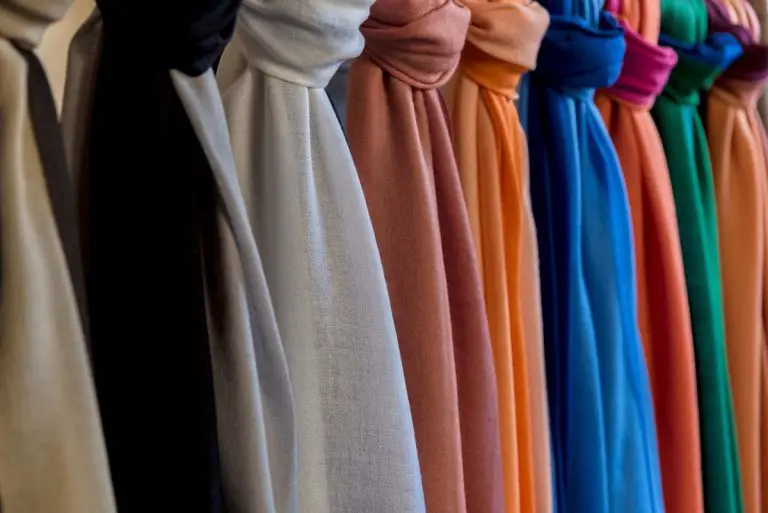Bringing a new baby into the world is a joyful and transformative experience. As you prepare their space, you’re not just designing a room—you’re creating a nurturing environment. Feng Shui, the ancient Chinese art of harmonizing energy, offers a powerful way to ensure that your baby’s room is a sanctuary of calm and positivity. By applying these principles, you can foster a sense of security and well-being from their very first days.
Your baby’s room is more than a sleeping space; it’s where your child will begin to experience the world. Feng Shui focuses on the flow of Qi—life force energy—that affects well-being, balance, and growth. In a baby’s room, the right energy flow supports restful sleep, healthy development, and emotional stability.
A well-designed Feng Shui nursery promotes peace and comfort, helping your baby feel safe and connected. Each element in the room—from furniture placement to color choices—affects the overall energy. Avoiding energy blockages and incorporating natural elements can positively impact not only your baby but the entire household’s harmony.
By mindfully crafting your baby’s environment using Feng Shui, you set the stage for positive development, ensuring they grow up surrounded by beneficial energy that nurtures their body, mind, and spirit.
Choosing the Right Location for the Baby Room
Ideally, select a room situated in the Creativity/Children area of your home, as this promotes positive energy and growth. It should be close to the parents’ bedroom for ease of access and to foster a sense of security. A room with ample natural light is beneficial, as it promotes healthy energy flow and sets a positive tone for your baby’s well-being.
If possible, choose a room that is square or rectangular, as these shapes create a stable and balanced environment. Avoid rooms at the end of a long hallway, as energy can rush through too quickly, creating an unsettled atmosphere. Additionally, rooms that face peaceful garden views or open spaces are ideal, as they connect your baby to nature’s calming energy.
What to Avoid: Rooms to Steer Clear From
Some rooms in your home may not be ideal for a baby’s nursery. Avoid rooms near noisy or high-traffic areas, such as next to the living room or kitchen, where noise and activity can disrupt sleep and create restless energy. Basements are also less suitable due to their low energy flow and often damp atmosphere, which can lead to feelings of isolation.
Avoid placing the nursery directly above a garage or below a bathroom. These areas carry unstable energy that can disrupt your baby’s rest and development. Additionally, steer clear of rooms with sloped ceilings or beams, as they can create oppressive energy. If you have no other option, use decor to soften these features, such as hanging light fabric or adding upward-facing lights.
Facing Directions: Unlocking the Power of Orientation
The orientation of your baby’s room plays a crucial role in harnessing positive energy. Ideally, the room should face east or southeast, aligning with the rising sun. This direction brings in vibrant, nurturing energy associated with growth and new beginnings.
If facing east isn’t possible, a north-facing room is another good option, as it fosters calm, yin energy that supports restful sleep. Avoid rooms that face west, as the intense afternoon sun can create excessive yang energy, leading to restlessness and overstimulation.
Positioning the crib so your baby’s head faces one of their auspicious directions, based on their birth element, can further enhance positive energy flow. This personalized touch helps align their energy with the room’s, promoting comfort and tranquility.
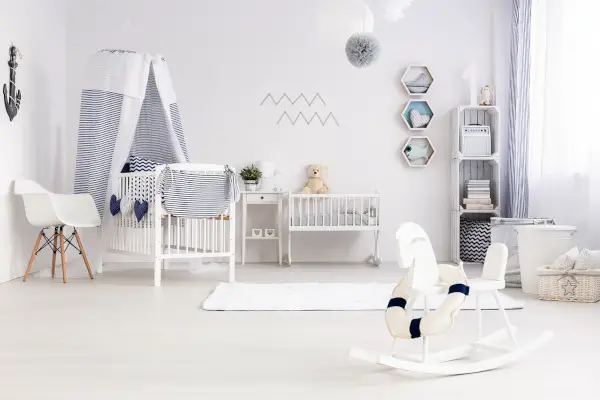
Furniture Placement for Harmony and Balance
The crib is the heart of the baby’s room, so its placement is crucial for creating a safe and soothing environment. Position the crib against a solid wall, ideally not under a window, to provide a sense of stability and protection. This arrangement also blocks external Qi disturbances from affecting your baby’s sleep. (Take a look at crib designs and prices – Aff.link)
Ensure the crib is placed in the “command position,” where you can see the door without being directly in line with it. This placement helps your baby feel secure and avoids harsh energy (or Sha Qi) rushing through the door. Avoid placing the crib under ceiling beams or sloped ceilings, which can create a feeling of pressure.
Where to Place the Changing Table: A Spot for Smooth Transitions
The changing table should be positioned in a way that allows you to easily access all necessities without turning your back on the baby. Place it near the crib or a corner to create a dedicated space for daily routines. Ensure the table is against a stable wall, which symbolizes support and safety.
Avoid placing the changing table near the door or directly in front of a window. These locations can create a drafty or unstable energy flow, making your baby uncomfortable during changes. Keep essentials organized and within reach to avoid unnecessary stress and maintain a smooth, harmonious routine. (Take a look at changing table designs and prices – Aff.link)
Rocking Chairs and Seating: Comfort Meets Good Energy
A rocking chair is a beautiful addition to any baby’s room, providing comfort for both the baby and parents. Position it in a corner or near the crib but not blocking pathways. This creates a cozy nook for bonding moments. Avoid placing the chair with its back directly to the door, which can create a sense of vulnerability.
Choose a chair with rounded edges and soft textures to promote a nurturing atmosphere. If space allows, add a small side table for convenience, keeping the area organized and serene. (Take a look at rocking chair designs and prices – Aff.link)
Avoiding Clutter: Keeping the Space Open and Inviting
Clutter disrupts the flow of positive Qi and creates chaotic energy. Keep the baby’s room as open and airy as possible by limiting furniture and avoiding overcrowding. Choose multi-functional pieces, like storage ottomans or cribs with built-in drawers, to maximize space.
Regularly clear out unused items and organize toys, books, and supplies in baskets or closed storage units. This not only maintains visual calm but also promotes a peaceful, inviting atmosphere where positive energy can flow freely.
| Furniture Item | Ideal Placement | What to Avoid |
| Crib | Against a solid wall, away from the door | Directly facing the door or under a window |
| Changing Table | Close to the crib but not adjacent | In the middle of the room |
| Rocking Chair | In a corner with a view of both crib and door | Too close to sharp corners |
| Shelves | High enough to keep items out of reach | Overloaded with toys or books |
Feng Shui Color Choices for the Baby’s Room
When designing your baby’s room, selecting the right color palette is essential for creating a nurturing environment. Calming colors, such as pale blue, mint green, and soft lavender, promote relaxation and tranquility, making them ideal for a space where your baby will sleep and spend time. These hues can help soothe your baby, encouraging restful sleep and a peaceful atmosphere.
On the other hand, stimulating colors like bright red or vibrant orange can energize a space but may not be suitable for a nursery. While it’s important to incorporate some lively accents to inspire curiosity and engagement, balance is key. Aim for a mix of calming base colors complemented by subtle pops of stimulating shades in decor or accessories. This approach ensures the room remains inviting without overwhelming your baby’s senses.
The Feng Shui Meaning of Popular Colors
Each color carries specific meanings and energies in Feng Shui, influencing the overall vibe of your baby’s room. Here are some popular choices and their significance:
- Pale Blue: Symbolizes peace and tranquility, promoting restful sleep.
- Soft Coral: Encourages warmth and nurturing feelings, ideal for bonding.
- Lavender: Associated with calmness and spiritual growth, fostering a serene atmosphere.
- Mint or Sage Green: Represents health and growth, making it perfect for a baby’s development.
- Cream or Warm Cocoa: Offers comfort and stability, creating a cozy environment.
Avoid overly contrasting color combinations like black and white, as these can create an unsettling atmosphere. Instead, opt for softer palettes that encourage relaxation while still incorporating elements of joy and creativity.
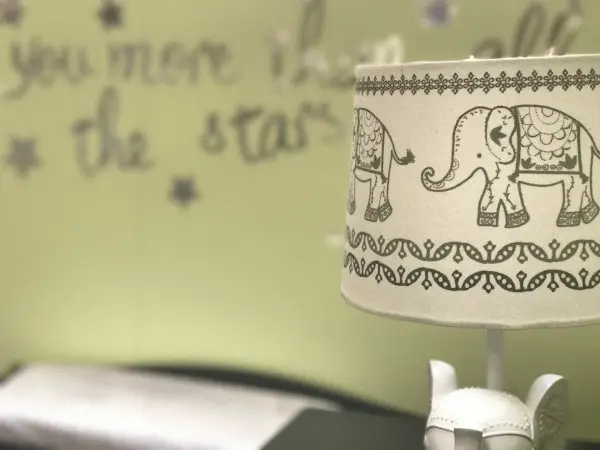
Creating Balance with Yin and Yang Energies
In Feng Shui, achieving balance between Yin (passive) and Yang (active) energies is crucial for a harmonious space. For your baby’s room, aim for a predominance of Yin energy to promote calmness and restfulness. This can be achieved through soft colors, gentle textures, and soothing decor.
To introduce Yang energy without overwhelming the space, consider adding playful elements like colorful toys or cheerful artwork that reflect your baby’s personality. The key is to maintain a harmonious balance—too much Yang energy can lead to overstimulation while too much Yin can result in lethargy.
Incorporating elements from nature—such as plants or natural materials—can also help balance these energies. Soft textures like plush rugs or cozy blankets enhance comfort while contributing to the overall soothing ambiance of the room.
By carefully selecting colors that align with Feng Shui principles and balancing Yin and Yang energies, you can create a nurturing environment that supports your baby’s well-being and development.
| Color | Feng Shui Meaning | Recommended Use |
| Pale Blue | Peace and tranquility | Walls, bedding |
| Soft Green | Growth and health | Accents, decor |
| Lavender | Calmness and spiritual growth | Bedding, accessories |
| Cream | Comfort and stability | Walls, furniture |
| Pink | Nurturing and love | Accents, decor |
| Yellow | Cheerfulness and warmth | Accents, toys |
Selecting Decor and Accessories
When selecting decor for your baby’s room, prioritize safety, symbolism, and meaning. Choose decorations that are made from non-toxic materials and free from sharp edges. Soft textiles, such as plush toys and fabric wall hangings, not only enhance the room’s aesthetic but also ensure a safe environment for your little one. (Take a look at baby room decoration designs and prices – Aff.link)
Incorporating symbolic decorations can foster a nurturing atmosphere. For instance, elephants are often associated with good luck and protection in Feng Shui. Consider adding elephant-themed decor items like mobiles or wall decals to imbue the space with positive energy. Additionally, creating a birth memento display or a baby card collage can serve as a meaningful reminder of love and family connections, enriching the emotional landscape of the nursery.
Avoiding Sharp Edges: Softness and Safety First
Safety is paramount in any nursery design. Avoid furniture with sharp edges or corners that could pose a risk to your baby as they begin to explore their surroundings. Instead, opt for pieces with rounded edges or use corner protectors on furniture that cannot be replaced.
Incorporating soft furnishings—like cushioned rugs and plush pillows—can also enhance safety while adding comfort to the space. Textured elements invite tactile exploration, which is essential for your baby’s development. By ensuring that all decor items are soft and safe, you create an inviting environment where your baby can grow and thrive without unnecessary hazards.
The Role of Mirrors: Dos and Don’ts in a Baby’s Room
Mirrors can amplify energy in a room, so their placement requires careful consideration. In a baby’s room, avoid placing mirrors directly opposite the crib, as they can create an unsettling or overly active environment. Mirrors reflecting the baby while sleeping may disrupt their rest.
If you want to use a mirror, position it where it reflects natural light or a pleasant view, enhancing positive energy without disturbing sleep. Consider placing it inside a closet door or using small decorative mirrors that don’t face the crib directly.
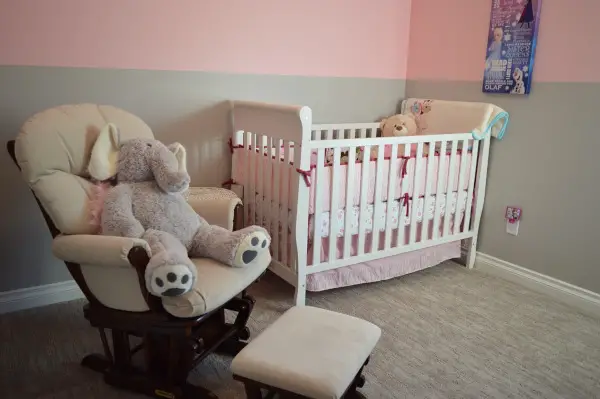
Plants and Nature Elements: Bringing the Outdoors In
Bringing natural elements into your baby’s room connects them with the calming energy of nature. Small, non-toxic plants like snake plants, spider plants, or peace lilies can purify the air and promote a sense of tranquility. Ensure the plants are well-maintained, as wilting or dying plants can create stagnant energy.
Nature-inspired decor, such as wooden furniture or nature-themed wall art, also enhances the room’s energy. Natural materials like cotton or bamboo in textiles promote a soothing environment and align with the principles of Feng Shui.
🍀 Our “Feng Shui Master” app is your trusted companion, offering a useful guide to implementing Feng Shui principles. Try it now!
Feng Shui Your Baby’s Room: Lighting and Air Flow
Lighting is a crucial element in Feng Shui, significantly influencing the energy flow in your baby’s room. Natural light is considered the best source of positive energy. It invigorates the space, promotes well-being, and fosters a harmonious atmosphere. Position windows to maximize sunlight exposure, allowing your baby’s room to feel bright and welcoming. This not only enhances the room’s aesthetic but also contributes to your baby’s mood and sleep quality.
While natural light is ideal, artificial lighting also plays an important role. Use soft, diffused lighting to create a gentle ambiance that encourages relaxation during nighttime routines. Avoid harsh, direct lighting that can be overwhelming. Instead, consider using lamps with warm color temperatures (around 2700K) to maintain a cozy environment. Incorporating dimmers can also help you adjust the brightness according to the time of day or activity, ensuring the room remains inviting and soothing.
Keeping Fresh Air Circulating: Healthy Qi and Better Sleep
Air quality is vital for maintaining healthy Qi in your baby’s room. Stale air can lead to energy stagnation, affecting your baby’s comfort and sleep quality. To promote fresh air circulation, regularly open windows to let in natural breezes and clear out any stagnant energy. This practice not only refreshes the atmosphere but also enhances overall well-being.
In addition to opening windows, consider using an air purifier to filter out allergens and pollutants. Plants can also help improve air quality while adding a touch of nature to the decor. Choose non-toxic plants that are safe for babies, such as spider plants or peace lilies, which can contribute to a healthier indoor environment.
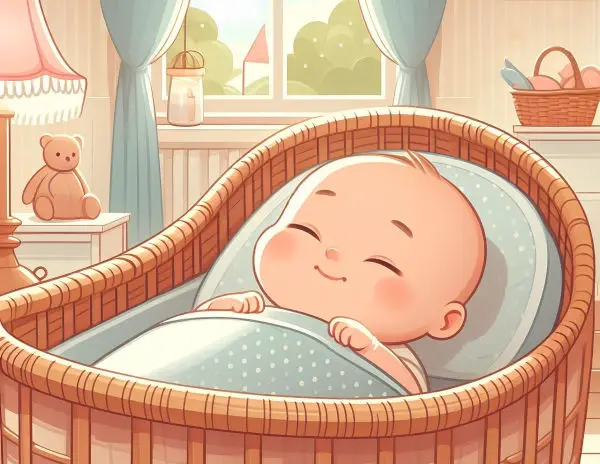
Avoiding Stagnation: Preventing Energy Blockages
To ensure a harmonious flow of energy in your baby’s room, it’s essential to prevent stagnation or blockages that can disrupt Qi. Pay attention to hidden corners or areas that may not receive adequate light or airflow; these spots can become stagnant energy zones. Use adjustable lighting fixtures like lamps or track lights to illuminate darker corners, revitalizing the energy throughout the space.
Regularly decluttering is another effective way to combat stagnation. Keep surfaces clear and organized, ensuring that toys and other items are stored neatly. This not only enhances the room’s visual appeal but also promotes a sense of calm and order, allowing positive energy to flow freely.
Feng Shui Tips for a Peaceful and Restful Environment
Establishing a peaceful environment in your baby’s room is essential for promoting restful sleep. A noise-free zone is crucial, as excessive sound can disrupt your baby’s natural rhythms and lead to restlessness. To achieve this, consider soundproofing measures such as heavy curtains or sound-absorbing materials that muffle external noises. Soft furnishings like rugs and cushions can also help absorb sound, creating a more serene atmosphere.
In addition to physical barriers, incorporating soothing sounds can enhance the nursery’s calmness. Gentle white noise machines or soft lullabies can mask sudden noises and provide a consistent, relaxing background sound. Avoid loud toys or electronic devices that may create jarring noises, as these can be overly stimulating and counterproductive to the peaceful environment you aim to cultivate.
Want to learn more about Feng Shui? Take a look at these Courses and Books – Aff.link
Soft Textures and Materials: Enhancing Comfort and Warmth
The choice of textures and materials in your baby’s room plays a significant role in creating a comforting atmosphere. Soft textures are essential for promoting warmth and coziness. Opt for plush rugs, soft blankets, and gentle fabrics for bedding to create an inviting space where your baby feels secure.
Incorporating natural materials, such as cotton or wool for textiles and wood for furniture, not only enhances comfort but also aligns with Feng Shui principles that favor organic elements. Avoid synthetic materials that may feel harsh or uncomfortable against your baby’s skin. By prioritizing softness and warmth in your decor choices, you foster an environment conducive to relaxation and restful sleep.
The Importance of Routine: Aligning Feng Shui with Daily Habits
Establishing a consistent daily routine is vital for your baby’s well-being and aligns seamlessly with Feng Shui principles. A predictable schedule helps regulate your baby’s internal clock, making it easier for them to understand when it’s time to sleep or play. Incorporate calming activities before bedtime, such as gentle rocking or soft storytelling, to signal that it’s time to wind down.
Aligning your routine with the natural rhythms of day and night enhances the overall energy of the room. For instance, dimming lights in the evening creates a tranquil atmosphere that encourages relaxation. Similarly, opening curtains during the day allows natural light to flow in, promoting alertness and activity.
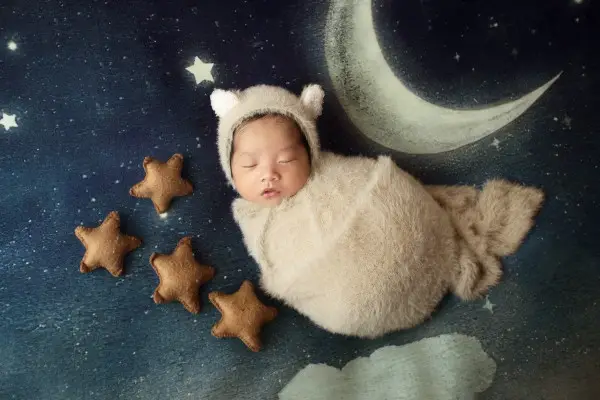
Feng Shui Tips for Specific Challenges
Dealing with Sloped Ceilings
Sloped ceilings can create oppressive energy, known in Feng Shui as Sha Qi, which may lead to feelings of pressure or unease. To counteract this, avoid placing the crib or any major furniture directly under the sloped area. If this isn’t possible, soften the impact by hanging light fabric or a canopy over the crib to create a sense of protection and reduce downward pressure.
Paint the sloped ceiling in a lighter shade than the walls to visually lift the space. You can also install upward-facing lights to draw the eye upward and counteract the feeling of heaviness. Incorporating vertical elements, like tall shelves or wall art, helps balance the room’s energy by encouraging an upward flow.
Related reading: 18 Interior Design Elements that are BAD Feng Shui – Opens in new tab
Maximizing Space in Small Rooms
Small rooms can feel cramped and overwhelming, but thoughtful Feng Shui can transform them into cozy, harmonious spaces. Start by choosing multi-functional furniture, such as a crib with built-in storage or a changing table that doubles as a dresser. This minimizes clutter and maximizes functionality.
Keep the color palette light and airy to create an open feel. Mirrors can help expand the visual space but should be placed carefully—avoid positioning them where they reflect the crib. Decluttering is essential; ensure everything has a designated place, and use vertical storage solutions to keep the floor clear.
Maintain good energy flow by arranging furniture so it doesn’t block doorways or windows. A tidy, organized space invites positive Qi, making even the smallest room feel balanced and serene.
Feng Shui Solutions for Shared Bedrooms
In a shared bedroom, it’s crucial to create a sense of individuality while maintaining harmony. Use subtle room dividers, like soft curtains or shelves, to establish personal spaces for each child. This promotes a sense of ownership and reduces potential conflicts.
Position beds so that each child has a clear view of the door, enhancing feelings of security. Avoid placing beds directly in line with the door or facing each other, as this can create opposing energy. If space is tight, bunk beds are a good option but ensure the top bunk has a canopy or softening element to reduce the feeling of exposure.
Balance the room’s energy by incorporating shared decor that fosters unity, such as family photos or a calming nature-themed mural. Ensure the space remains organized, as clutter can cause tension and disrupt the flow of positive energy.
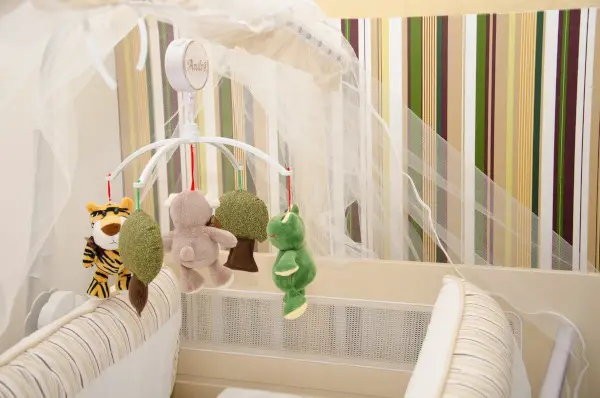
Common Feng Shui Mistakes to Avoid in Your Baby’s Room
Overcrowding the Room: Less is More
One of the most common Feng Shui mistakes in a baby’s room is overcrowding it with too much furniture or decor. While it’s tempting to fill the room with numerous items, the key to creating a balanced environment is to keep the space open and uncluttered. Overcrowding creates stagnant energy, making it harder for Qi to flow freely and disrupting the calm needed for restful sleep and relaxation.
Instead of cramming in extra furniture, opt for multi-functional pieces like storage cribs or convertible changing tables. Limit decor to meaningful, symbolic items and avoid excess. By leaving space for movement and air flow, you create an inviting, peaceful environment where your baby can thrive.
Misplaced Electronic Devices: Hidden Dangers in the Nursery
Another common mistake is placing electronic devices in the nursery. While many parents rely on baby monitors, nightlights, and sound machines (Aff.links), excessive electronics can disrupt the room’s energy. Electronics emit electromagnetic fields (EMFs), which can create imbalances in the room and may negatively affect your baby’s health and sleep patterns.
To maintain a harmonious environment, position electronic devices away from the crib and other sleep areas. Opt for battery-operated or low-voltage devices, and unplug them when not in use. Avoid placing monitors directly above the crib or near the baby’s head. If possible, choose non-electric alternatives, like a traditional wind-up mobile, to add calming sound and motion without introducing EMFs.
Ignoring the Command Position: Ensuring a Secure Crib Placement
One of the most crucial Feng Shui principles for a baby’s room is the “command position.” This refers to positioning the crib where you can see the door without the baby being directly in line with it. Failing to do so can leave your baby feeling vulnerable, as they won’t be able to see who is entering the room, creating an unstable and uneasy environment.
Place the crib against a solid wall for support, with the foot of the crib away from the door, and ensure there is a clear line of sight to the door. This placement fosters a sense of security, allowing your baby to feel protected and comfortable. If the room layout doesn’t allow for the ideal command position, consider using a mirror or a gentle light to ensure the energy feels balanced and secure.
Want to learn more about Feng Shui? Take a look at these Courses and Books – Aff.link
Feng Shui for Different Stages of Development
As your baby grows, their needs and developmental stages will change, and so should the energy in their room. In the early months, focus on creating a peaceful and secure environment, with gentle lighting, soothing colors, and minimal distractions. As your baby begins to explore, you may need to introduce new elements to stimulate their curiosity while maintaining a sense of safety and comfort.
Transition from a crib to a toddler bed when your child is ready, and adjust the layout to accommodate more space for movement. You may want to introduce more interactive elements, such as soft toys (Aff.link), books, and simple activities that encourage exploration without overwhelming the space.
Pay attention to how your child responds to their environment, and be prepared to adjust elements of the room as needed to support their development at each stage. Regularly reassess furniture placement and decor to ensure the energy remains balanced and conducive to their growth and well-being.
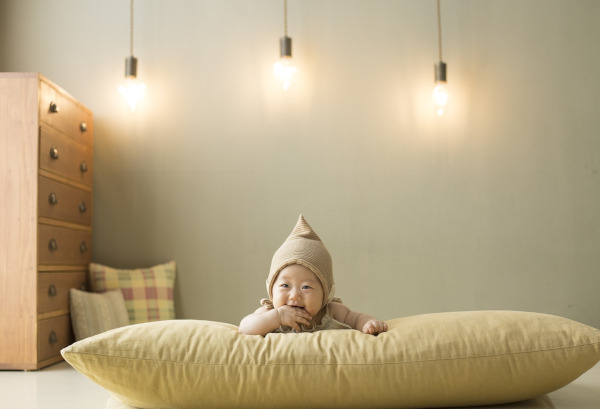
Feng Shui for Toddlers: Adjusting for Exploration and Safety
As toddlers become more mobile, their room should be adapted to foster both safety and exploration. At this stage, it’s important to create a space that encourages independence while ensuring safety. Furniture should be secured, and sharp corners or heavy items that could fall should be avoided. Keep important items, like books or toys, within reach to support autonomy and play.
For Feng Shui, toddlers need a room where the energy supports both physical activity and restful moments. Choose stimulating yet calm colors—such as soft greens or warm yellows—that invite curiosity but don’t overexcite. Install soft lighting to reduce harsh glare and allow your child to transition between activities smoothly. A designated play area or corner can help balance activity with rest.
Incorporate elements that enhance learning, such as simple art, nature-inspired decorations, and sensory-friendly items. These subtle changes will encourage development while maintaining the room’s harmonious energy flow.
Long-term Planning: Preparing the Space for Future Transitions
As your child grows, so will their sense of identity and personal style. Planning ahead for these changes in your baby’s room will help you maintain a nurturing environment that evolves with their needs. As they transition into a young child, consider incorporating elements that reflect their individuality—such as personalized decor, art, or items related to their interests—while ensuring the room remains balanced and soothing.
For long-term Feng Shui, avoid making drastic changes too frequently, as this can disrupt the energy flow. Instead, gradually introduce new elements that align with their development, keeping the room fresh but still grounded in the core principles of harmony and safety. Consider allowing your child to have input into the room’s design as they get older, empowering them to create a space that feels like their own while still supporting balance and calm.
| Stage | Feng Shui Tips |
| Infant | Prioritize safety, soft colors, and calming sounds |
| Toddler | Create designated play areas, use bright colors, and encourage exploration |
| Preschooler | Incorporate educational elements, personalize the space, and promote creativity |
| School-Age Child | Designate a quiet study area, use calming colors, and encourage organization |
Final Thoughts
Creating a harmonious and nurturing environment for your baby through Feng Shui principles is a rewarding journey that supports their well-being and development. By thoughtfully considering room placement, furniture arrangement, color choices, and decor, you can cultivate a space that promotes safety, comfort, and positive energy.
As your child grows, adapting the room to meet their evolving needs while maintaining the principles of Feng Shui ensures a continuous flow of supportive energy. Whether you’re addressing specific challenges or planning for future transitions, these guidelines will help you create a sanctuary that fosters peace and joy for both you and your child. Embrace the art of Feng Shui in your baby’s room, and watch as it becomes a cherished space filled with love and harmony.
Want to learn more about Feng Shui? Take a look at these Courses and Books – Aff.link
Stay in Touch
 Join our newsletter by using the forms on this website or click here!
Join our newsletter by using the forms on this website or click here! Follow us on Google News
Follow us on Google News Follow us on Facebook
Follow us on Facebook
Featured Photo by Ömürden Cengiz on Unsplash




